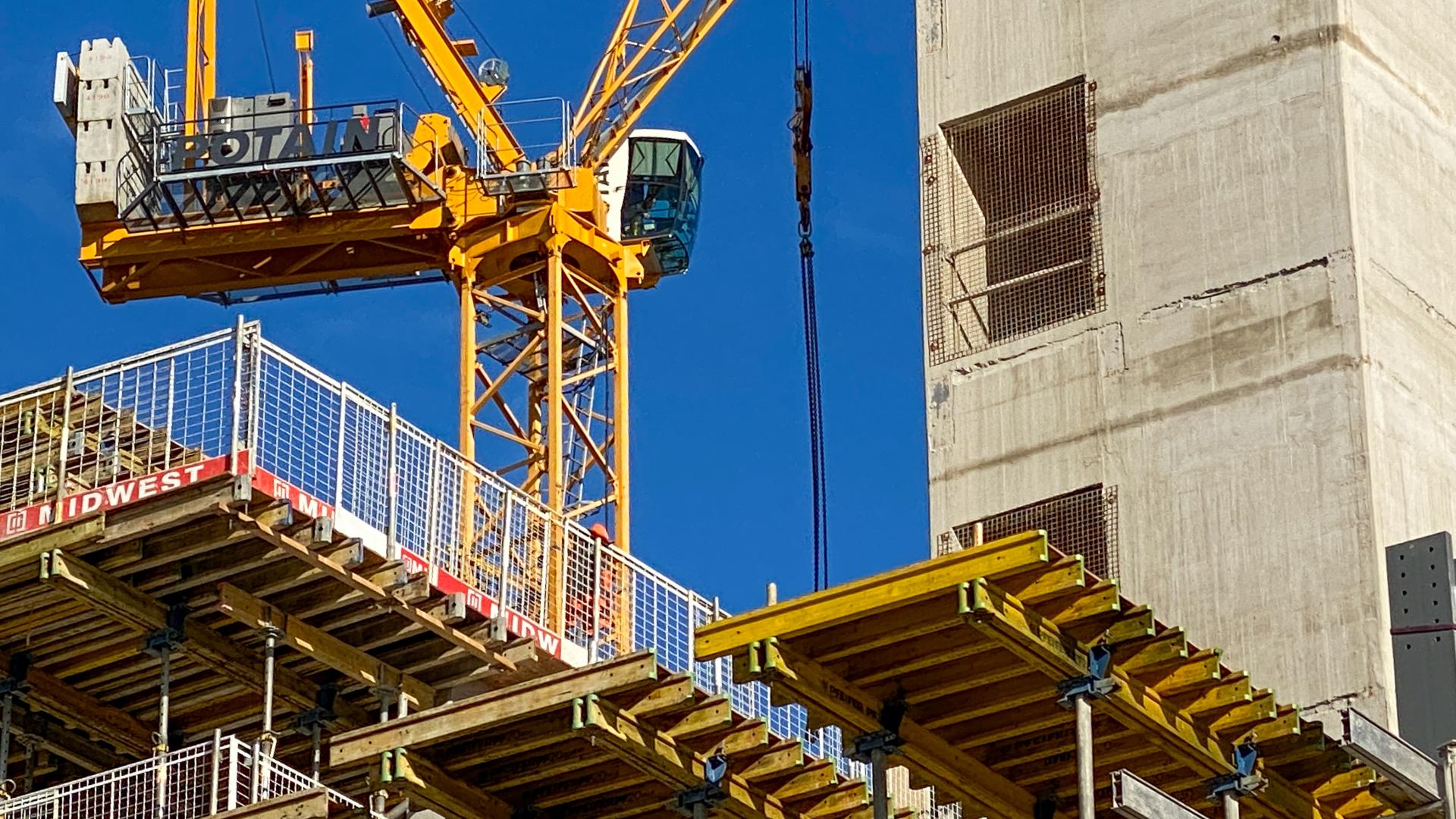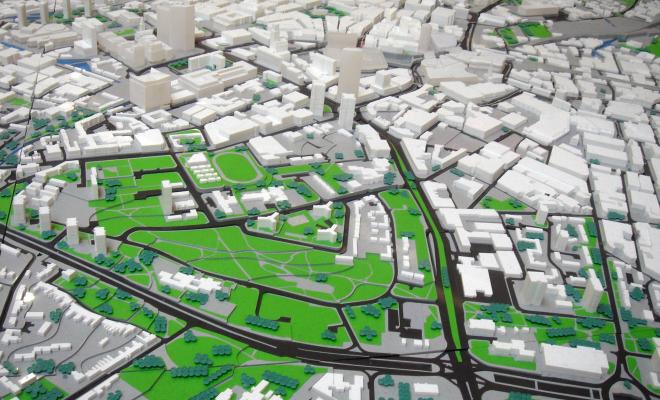Rebecca Murray10 Sep 2021
The story so far
The planning system shapes what development can happen and where. Done well, planning ensures that the right development happens in the right place and at the right time, benefiting communities, the environment and the economy. In summer 2020, the government announced it'll "tear up" the planning system in England. Since then, a series of back and forths have taken place:
- In August 2020, the government announced it’ll “tear up” the planning system in England.
- In response, Friends of the Earth launched a campaign to oppose the government’s proposals to reform the planning system, with tens of thousands of citizens contacting their MPs and over 2,000 councillors supporting our cause.
- Secretary of State, Robert Jenrick decided to delay the government’s response to the planning white paper consultation (originally due in spring) in a significant retreat from government plans of “ripping up the system”.
- Meanwhile, a revised national policy framework and the new model design code were published in July 2021.
- Early September 2021 saw widespread media reports that government had abandoned the worst of its anti-democratic plans to overhaul the planning system.
- Mid-September 2021, Robert Jenrick sacked in Cabinet reshuffle and replaced by Michael Gove.
- Results of the government consultation and a draft Planning Bill expected to be published before the end of 2021.
Taking democracy out of the planning system
While the government was facing a rising tide of concern this summer about the impact on local democracy of its “rip it up” planning reform proposals, two key documents were quietly published – the revised National Planning Policy Framework (NPPF) and the National Model Design Code (NMDC). These little known but vitally important documents set out guidance to inform council planning decisions, on everything from mining and housing to roads and retail parks.
Despite media reports of a welcome climbdown on the worst aspects, these latest changes to policy still suggest limiting community engagement to the earliest stages of plan-making and design code creation (design codes are a collection of rules that inform the physical development of a site or area). At the moment, communities can engage with planning decisions at all stages of the planning process. But moves to reduce public engagement could still be to come, as we expect the draft Planning Bill in autumn 2021.
Media reports suggest that the government has “scrapped” proposals to introduce a zonal system for determining planning applications, which if true, would retain the rights of communities and local councils to object to individual planning decisions. Such an important reversal on the intended planning reforms would be a welcome result following opposition by Friends of the Earth, CPRE and many local community groups and local Councillors.
However, some of the damage to local democracy has already been done. Over the past year, the government has continued to loosen planning restrictions through what’s known as Permitted Development Rights (PDR), adding to an ever-growing list of developments that don’t need planning permission at all (including various building works and changes of use for properties). These PDR permissions have limited public engagement opportunities and won't be subject to the new NPPF or NMDC requirements introduced in July 2021, particularly on beauty and green infrastructure.
Having a planning system in place that only allows public consultation on design code creation, while allowing properties to change from shops and offices to homes without applying such design codes, bypasses democracy and creates further discontent within local communities. It has also created some of the worst housing we have seen in many years, with an official report from University College London warning it would create “slums of the future”.
Failing to plan for climate change
The revised NPPF includes two changes covering sustainable development and climate change. The first includes a passing reference to the 17 Global Goals for Sustainable Development and the second strengthens wording around flood risk.
Climate breakdown has resulted in devastating weather, such as the extreme flooding seen across the UK, West Germany and further afield in Haiti. Despite this, the NPPF chapter on climate change remains relatively unchanged since the first version, published in 2012, meaning the climate sections of the NPPF are out of date and not fit for purpose. For example, no reference has been made to the government’s new target to reduce emissions by 78% by 2035. Excluding clear targets in planning guidance – guidance that will have a direct impact on whether they're met – raises serious concerns about the government’s priorities.
Provisions have not been included that would support greater uptake of renewable energy developments, which will be essential to meeting the Climate Change Committee’s recommendation of doubling onshore wind provision by 2050.
Also missing from the national planning framework is a standardised way to measure progress towards climate targets, thereby blocking local planning authorities from cutting carbon or measuring the true impact of developments. Making sustainable transport mandatory for all new developments is also limited to major developments. The new NMDC also lacks any principles on low carbon approaches, which further underlines the absence of joined-up thinking about the climate crisis and providing net-zero homes. We must establish planning policy measures that prioritise renewables and zero-carbon development over carbon-dependent development.
The absence of key targets in the NPPF – the planning system’s main policy document – is a fundamental flaw and a misjudgement by the government, particularly as the planning system is arguably the most important tool for creating our future. It’s alarming, for example, that there’s no intention of revising England’s planning policy position on coal mining. This is inexcusable in the year the UK hosts the UN climate talks and continues to claim to be a pioneer for climate action.
We need to give local government and communities the power to lead the way in creating climate- and nature-resilient places. This can only be achieved once the government provides the right national framework to make these demands a reality.
Little focus on nature
Despite the pandemic increasing demand for access to nature, there’s no acknowledgement of how nature, climate and people can be considered holistically and integrated with design, infrastructure and transport to benefit the wellbeing of people and the planet.
The NPPF should include clearer guidance on the role of nature, and green and blue infrastructure (plant-based and water-based landscape features like hedgerows and ponds). Friends of the Earth argues that the NPPF should say nature is an “essential” rather than “important” aspect of all developments in creating places, particularly for those without access to a private or shared outdoor space at home, or who live in green-space deserts. In addition, the environment has had only limited strengthening of protection, enhancement or alignment with wider initiatives, targets and goals (such as the government’s 25 Year Environment Plan).
With ongoing backpedalling, it’s unclear what we can expect for democracy, climate and nature from the Planning Bill announcement and government’s consultation response due to be published before the end of the year. We'll keep a close watch on the final proposals.
The battle to include clear and measurable targets for cutting carbon and nature recovery within national policy and stronger measures to safeguard democratic accountability is far from over.
Friends of the Earth will continue to challenge the government on its inaction in the face of the climate and nature emergencies, and the importance of local democracy in decision-making, through upcoming planning legislation expected in autumn and the next round of revisions to the NPPF due in 2022.
The recent victory (with the substantial caveat that media reports aren’t always accurate) shows that communities deserve to be listened to and can’t be cut out of the decisions that affect their lives. The time for creating a planning system that is fit for purpose and for the future is now.





